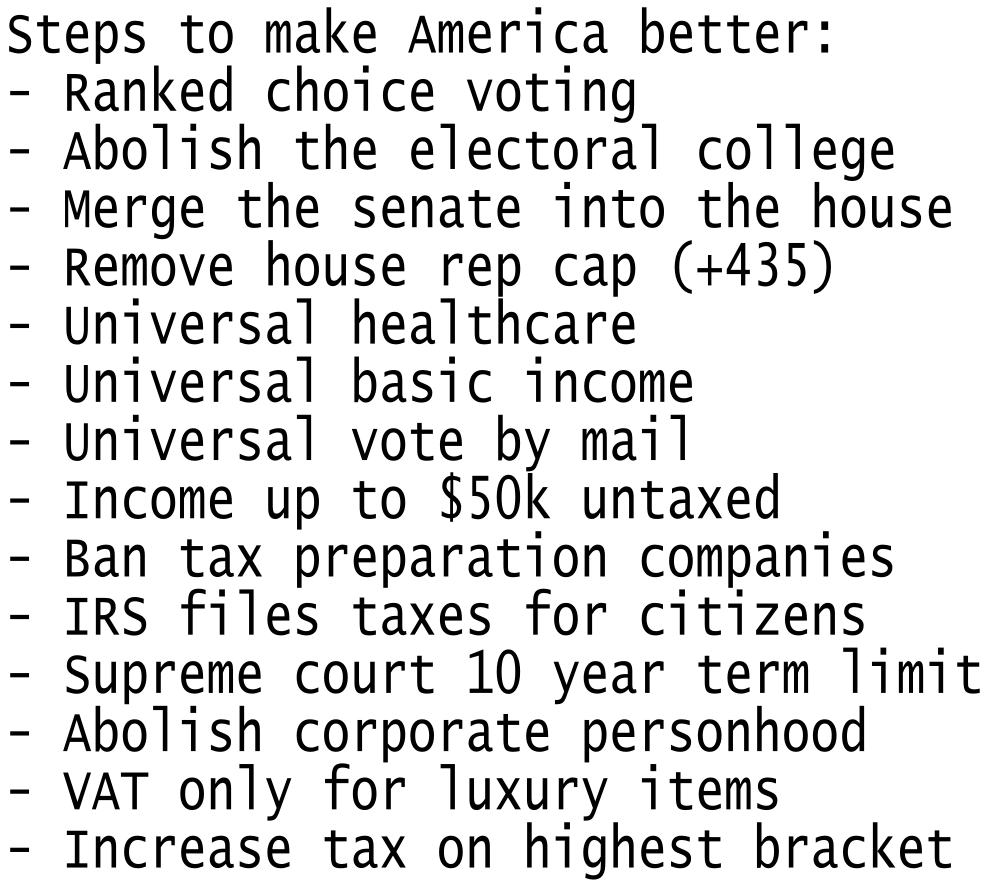this post was submitted on 07 Mar 2024
2 points (100.0% liked)
General Discussion
12143 readers
188 users here now
Welcome to Lemmy.World General!
This is a community for general discussion where you can get your bearings in the fediverse. Discuss topics & ask questions that don't seem to fit in any other community, or don't have an active community yet.
🪆 About Lemmy World
🧭 Finding Communities
Feel free to ask here or over in: [email protected]!
Also keep an eye on:
For more involved tools to find communities to join: check out Lemmyverse!
💬 Additional Discussion Focused Communities:
- [email protected] - Note this is for more serious discussions.
- [email protected] - The opposite of the above, for more laidback chat!
- [email protected] - Into video games? Here's a place to discuss them!
- [email protected] - Watched a movie and wanna talk to others about it? Here's a place to do so!
- [email protected] - Want to talk politics apart from political news? Here's a community for that!
Rules
Remember, Lemmy World rules also apply here.
0. See: Rules for Users.
- No bigotry: including racism, sexism, homophobia, transphobia, or xenophobia.
- Be respectful. Everyone should feel welcome here.
- Be thoughtful and helpful: even with ‘silly’ questions. The world won’t be made better by dismissive comments to others on Lemmy.
- Link posts should include some context/opinion in the body text when the title is unaltered, or be titled to encourage discussion.
- Posts concerning other instances' activity/decisions are better suited to [email protected] or [email protected] communities.
- No Ads/Spamming.
- No NSFW content.
founded 2 years ago
MODERATORS
you are viewing a single comment's thread
view the rest of the comments
view the rest of the comments

There's plenty of ways to do it. The simplest would be to quintuple the size of the house and elect five winners to every district. Literally nothing else would have to change. Five member districts are considered the smallest that are functionally immune to gerrymandering efforts.
A more reasonable suggestion is to start implementing these reforms on the state and local level, where referendums are possible and you have an easier time building a big enough organization to actually get shit done.
As for Approval vs RCV, the simplest answer is that they usually agree on the results [all the way down the line]https://electionscience.org/commentary-analysis/super-tuesday-deep-voting-methods-dive/), but approval is simpler and easier in every respect. Both systems tend to produce a candidate support graph that looks like exponential decay in real life. The complicated answer gets into voting theory/math and all sorts of technical criterion. While I think those arguments are valid, most poling and real world data seem to show that basically anything other than "choose one" is good enough, so I prefer the method that is easiest to explain to voters and hardest for candidates to claim shenanigans.